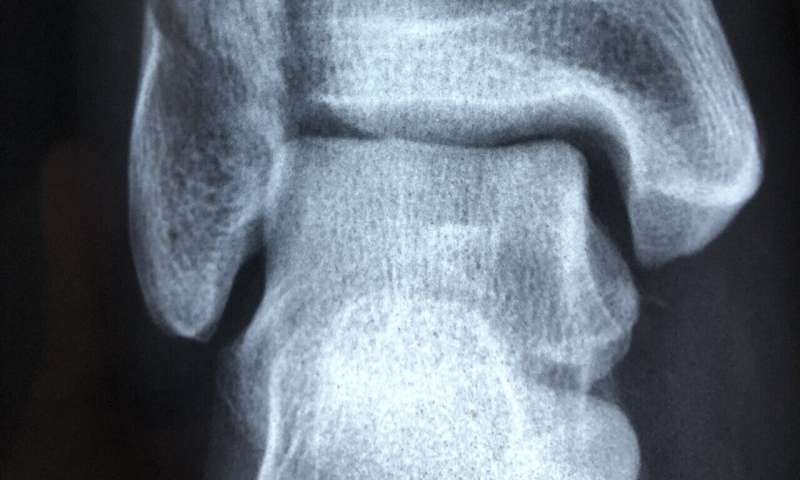Failure to calibrate for ethnicity in fracture epidemiology would do more harm than good

The Fracture Risk Assessment Tool (FRAX) is a widely used calculation tool that integrates clinical information in a quantitative manner to predict a 10-year probability of major osteoporotic fracture for both women and men in different countries.1
A recent article from the New England Journal of Medicine (NEJM) questioned the use of race or ethnicity in risk assessment algorithms, including FRAX.2 In response to this article, the new editorial ‘FRAX and Ethnicity’ in the journal Osteoporosis International, authored by experts from the International Osteoporosis Foundation (IOF), sets out key messages and considerations related to the inclusion of race/ethnicity in FRAX algorithms.3
Professor John Kanis, lead author, IOF Honorary President, and Director of the Centre for Metabolic Bone Diseases at Sheffield and Professor at the Catholic University of Australia, stated:
“It is important to understand the reality of fracture epidemiology and risk assessment. Fracture probability varies markedly in different regions of the world due to differences in fracture risk and mortality. In the case of hip fracture there is a ten-fold range in probability which far exceeds the differences in incidence between the sexes within a country. Ethnicity-specific risk often exceeds the differences between the sexes as well. Therefore failure to include ethnicity-specific models where applicable and where data is available, would negate the integrity of fracture risk assessment, resulting in large and avoidable errors in the stratification of risk.”
The editorial highlights the following key considerations:
- Fracture ethnicity is not a direct input variable in the FRAX model. FRAX models are calibrated for specific national fracture and mortality rates. In addition to 73 country-specific models, ethnicity-specific models have been calibrated specifically for the most common ethnicities in the USA, South Africa and Singapore. As variations in ethnicity-specific risk often exceed the differences in risk between sexes, failure to calibrate for ethnicity would have adverse consequences greater than failure to calibrate for sex.
- The significance of ethnicity varies by location. Black people in the USA have lower fracture probabilities than Caucasians, but the probability of fracture in Black people in the USA is much higher than in Black people in African countries, partly due to the higher fracture rates and lower mortality risks in the US Black population. Differences are also found for Chinese from Hong Kong, mainland China and Singapore.
- The efficacy of pharmacological interventions has been tested worldwide in randomized controlled trials so that ethnicity and location have a high level of evidence indicating their suitability for inclusion in risk assessment.
- In contrast to risk assessment and treatment decisions based solely on DXA-derived bone mineral density (BMD) values, the use of FRAX as a gateway for pharmaceutical intervention helps to resolve rather than exacerbate racial inequalities. As well as BMD, FRAX considers individual clinical factors not attributable to ethnicity such as age, parental fractured hip, weight, smoking, use of glucocorticoids, and alcohol use.
- FRAX has in fact permitted therapeutic care gaps to be recognized. Disparities in treatment gaps are common and attributable to many factors, including reimbursement issues for DXA in the USA, or focus on rare side effects of bisphosphonates. In the USA, the Women’s Health Initiative revealed that those at high risk and Asian ethnicity had a much higher likelihood (by 45%) of being on treatment compared to White women, while at-risk Black/African American women had half the likelihood of being prescribed appropriate osteoporosis medication compared to Caucasians. Treatment gaps are also seen in men compared to women, and community-dwelling older adults versus those in long-term care.
Professor Cyrus Cooper, IOF President and Professor at the MRC Lifecourse Epidemiology Unit, Universities of Southampton and Oxford, UK, stated, “The use of ethnicity in FRAX is not the major problem and indeed, FRAX helps to resolve inequalities rather than increase them. The key problem is that, as a disease, osteoporosis suffers from undertreatment worldwide. Fewer than 20% of individuals who fracture receive therapies to reduce the risk of future fracture within the year following a fracture. This crisis of undertreatment in osteoporosis clearly contrasts with the situation following myocardial infarction, in which 75% of patients receive beta blockers to prevent recurrent myocardial infarction.”
Source: Read Full Article
